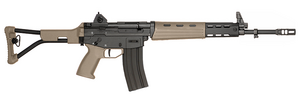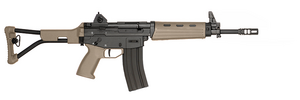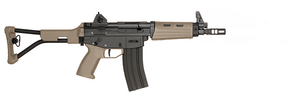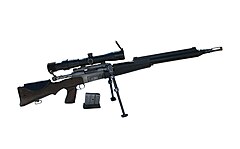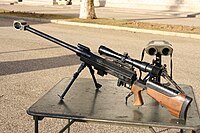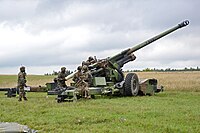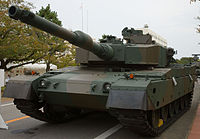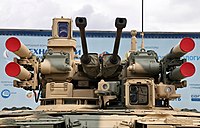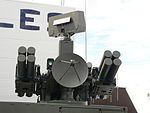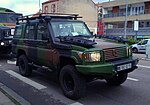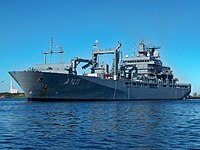United Communes Defense Forces
This article is incomplete because it is pending further input from participants, or it is a work-in-progress by one author. Please comment on this article's talk page to share your input, comments and questions. Note: To contribute to this article, you may need to seek help from the author(s) of this page. |
| Messidorian Armed Forces | |
|---|---|
| Forces Armées du Messidor Iɣskrbiln n Mgrawi | |
| File:Messidor Army Emblem.png File:Messidor Naval Jack.png File:Messidor Roundel.png The Messidorian Army Corps' emblem, the Navy Corps' jack, and the Air Corps' roundel | |
| Founded | 1839 |
| Service branches | Messidorian Army Corps Messidorian Navy Corps Messidorian Air Corps |
| Leadership | |
| Commander-in-Chief | President Yolande-Minerve Saverne |
| Commissioned Chairperson | Lt. General Rezki Tinifsan |
| Personnel | |
| Military age | 18-55 |
| Conscription | Voluntary service only |
| Active personnel | 102,800 total: Army Corps: 55,200 Navy Corps: 31,500 Air Corps: 16,100 |
History
The Messidorian Army and Navy Corps were founded in 1839, 8 years after the founding of the Messidor Union. The formation of a standing military was a contentious issue among the various syndicates who had originally called to rely upon civil militias organized at a local level rather than a central military. After the loss of northern Tafriqt in 1833, the notion that such a force could effectively protect the Union was effectively dispelled, though it took a further 6 years before the exact details of the Messidorian Armed Forces would be determined. From the outset, the Army and Navy Corps were small, professional, volunteer forces which were organized under a federal union. Merovian and later Aɣmatian factories ensured that they were well-equipped and supplied, though the forces established an enduring reputation of poor discipline. Despite their reputation, the first major deployment of the Messidorian Army Corps in the Annexation of the Timna Strip in 1919 was a great success. The Messidorian Navy Corps served nearly the entirety of its first century and a half of existence as a patrol and deterrence fleet for ships making the transit across the Periclean Sea. During the Reannexation of Tafriqt in 1950-51, the Navy Corps ran blockades around the coast of Tafriqt and prevented any seaborne assault. They also saw major surface combat during the Fourth West Scipian War. The Messidorian Air Corps was founded in 1920 and rounded out the three branches. Elements of the Messidorian intelligence services are also incorporated into the armed forces, specifically the Naval Infantry Brigade of the Army Corps, which conducts counter-intelligence, special reconnaissance, and direct intervention missions.
Structure
The structure of the Messidorian Armed Forces is highly unusual for most nations but ultimately consistent with the Union's own logic. While elsewhere officers are trained and awarded commission and a strict military hierarchy is followed, each unit level of the Messidorian Armed Forces elect their commanders, i.e.: an infantry section elects its sergeant, a ship elects its captain, and the general staff is elected by its branch of service. Elibigilty for commissioned roles is often subject to criteria of education or seniority. It is this particular element of the armed forces' structure that bewilders more disciplined military forces in the world. For their part, officers and enlisted members of the Messidorian Armed Forces hold that the system creates a greater sense of camaradery and investment in the service.
The combined armed forces is overseen by the Directorate of Defence Armed Forces Committee. The committee is chaired by the most senior of the elected members who are commanders of each of the three branches. The Director of Defence is also a member of the committee. The present chairperson of the committee is General Rezki Tinifsan. Below the committee each branch has its own general's staff composed of the commanders of its subgroups and their staffs.
The Army Corps is composed of 22 regiments and an air component divided among two divisions: one based in Aɣmatia and the other in Merovia. At an operational level the regiments are organized into 8 brigades; 4 for each division. While conscription is unconstitutional in the Messidor Union, additional volunteer regiments can be raised in emergencies. There is no standing reservist force in the Army Corps.
The Navy Corps operates under a single unified fleet - the Periclean Fleet. The formal organization of the fleet is much looser than the Army Corps and most of the officers maintain the rank of "Captain", taking on command of larger formations only for the duration of a particular deployment. Presently, the Navy Corps has a few active deployments in the Periclean protecting the corridor between Merovia and Aɣmatia.
The Air Corps has two air divisions which are not strictly organized along geographic lines. Each division has 5 wings which may have as many as 72 aircraft each or as few as 15 according to the wing's role. Unlike both the Army Corps and the Navy Corps, the Air Corps has 6 air reserve squadrons which fly the dated AT-32 fighter aircraft.
Branches of service
Messidorian Army Corps
Equipment
Arms
| Model | Image | Origin | Type | Calibre | Notes |
|---|---|---|---|---|---|
| Small arms | |||||
| PA-M16/A1 | Pistol | 10×25mm | Standard service pistol | ||
| FA-M58/B1 | Assault rifle | 7×40mm | Standard service rifle, licenced production of the Tsurushiman Type 89 rifle in 7×40mm 420 mm (16.5 in) barrel | ||
| FA-M58/C1 | Carbine | 7×40mm | Carbine variant of the FA-M58 300 mm (11.8 in) barrel | ||
| FA-M58/C2 | Carbine | 7×40mm | Short carbine variant of the FA-M58 for vehicle crews and pilots 190 mm (7.5 in) barrel | ||
| FR-M55/B3 | Marksman rifle | 7.5×54mm | Second generation update of the Mle 105 service rifle | ||
| FM-M21/A2 | Medium machinegun | 7.5×54mm | Section support weapon and vehicle-mounted machinegun | ||
| FM-M27/A3 | Heavy machinegun | 12.7×99mm | Vehicle-mounted machinegun | ||
| FRCM-M70/A1 | Anti-matériel rifle | 12.7×99mm | In limited use with special forces | ||
| MP-M54/A2 | Portable ATGM | 136mm | |||
| LG-M58/A1 | Grenade mortar | 50mm | |||
| G-O23/A5 | Hand grenade | ||||
| FA-E30/A1 | Assault rifle | 7×40mm | In training, reserve, and police service Messidorian modification of the North Ottonian/Ostrozavan-designed PAL in 7×40mm | ||
| Mle 113 | Semi-automatic rifle | 7.5×54mm | In training, ceremonial, and police service | ||
| Mle 105 | Bolt-action rifle | 7.5×54mm | In training, ceremonial, and police service | ||
| Artillery | |||||
| OR-M41/A1 | Towed howitzer | 155mm | |||
Vehicles
| Model | Image | Origin | Type | Armament | Notes |
|---|---|---|---|---|---|
| Armoured vehicles | |||||
| CM-A52/A1 | Main battle tank | 120mm smoothbore cannon FM-27 12.7mm machinegun FM-21 7.5mm machinegun |
Co-developed with the Ostrozavan OPU-S78 series, the North Ottonian M15/VII series, and the Tsurushiman Type 90 | ||
| CM-A52/B1 | Fire support vehicle | 2× 30mm autocannons 4× 136mm ATGM launchers 2× 50mm grenade launchers FM-27 12.7mm machinegun FM-21 7.5mm machinegun |
Built on the CM-A52 chassis | ||
| VBR-A37/A6 | Armoured reconnaissance vehicle | 90mm AT cannon 2× FM-21 7.5mm machineguns |
|||
| VBC-A70/A1 | Infantry fighting vehicle | 30mm autocannon FM-21 7.5mm machinegun |
VBC-A70/B1 : ambulance VBC-A70/C1 : command vehicle VBC-A70/D1 : engineering vehicle | ||
| VBA-A70/A1 | Self-propelled artillery | OR-41 155mm howitzer | |||
| VBA-A70/B2 | Mobile SAM platform | 8× 136mm SAM launchers | |||
| Light vehicles | |||||
| CU-XNO68/A6 CU-XNO68/A10 |
Utility, transport, and cargo vehicles | Converted civilian vehicle, 6x6 and 10x10 configurations | |||
| CU-XT53/A1 | Utility and transport vehicle | Converted civilian vehicle | |||
| Aircraft | |||||
| HA-XT66/A2 | Attack/scout helicopter gunship | 30mm autocannon 12× 136mm ATGM launchers |
|||
| AU-F51/A1 | Cargo/transport plane | Converted civilian aircraft | |||
Vessels in active service
| Class | Image | Role | Armament | Number in service | Notes |
|---|---|---|---|---|---|
| Ayll Lbaz-class | Anti-air frigate | 40× 340mm SAMs 39× 136mm SAMs 8× 350mm anti-ship missiles 2× 533mm torpedo tubes 100mm naval gun 2× 30mm autocannons 4× FM-27 12.7mm machineguns |
30 | Carries one HA-XT66/A2 helicopter, same hull as the Ɣum Lbaz-class | |
| Ɣum Lbaz-class | Anti-submarine frigate | 40× 350mm anti-ship missiles 30× 136mm SAMs 100mm naval gun 2× 30mm autocannons 4× FM-27 12.7mm machineguns |
4 | Carries two HA-XT66/A2 helicopters, same hull as the Ayll Lbaz-class | |
| Amansakal-class | Amphibious assault ship | 8× 136mm SAMs 2× 30mm autocannons 4× FM-21 7.5mm machineguns 4× FM-27 12.7mm machineguns |
2 | Carries 1-2 helicopter squadrons, 1-2 tank battalions, and 1-3 infantry battalions | |
| Taġruyt n Nhas-class | Patrol ship | 2× 30mm autocannons 2× FM-21 7.5mm machineguns |
10 | ||
| Tmnirin-class | Nuclear attack submarine | 14× 350mm anti-ship missiles 4× 533mm torpedo tubes |
7 | ||
| Hluaxdil-class | Auxiliary vessel | 8× 136mm SAMs 4× 30mm autocannons |
4 | Carries two HU-XJ50/A1 or HU-F37/A3 helicopters |
Messidorian Air Corps
Aircraft in active service
| Model | Image | Origin | Type | Notes |
|---|---|---|---|---|
| Ava 70 | Multi-role fighter | |||
| AAB-F32/B3 | Fighter/interceptor | In use for training and reserve squadrons | ||
| HA-XT66/A2 | Attack/scout helicopter gunship | |||
| HU-XJ50/A1 | Search and rescue helicopter | |||
| HU-F37/A3 | Cargo/transport helicopter | |||
| AU-F51/A1 | Cargo/transport plane | Converted civilian aircraft, electronic warfare variant |
Ranks and insignia
All three branches of service make use of the same rank insignia, though titles vary.

